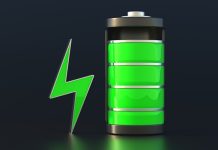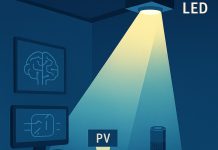
Scientists at the Hong Kong University of Science and Technology (HKUST) have developed a new laser printing method that could make the production of high-performance lithium-sulfur batteries much faster and cheaper.
The innovative technique simplifies a complex, multi-step battery-making process into a single, lightning-fast step—opening the door to more efficient, powerful, and scalable energy storage solutions.
Led by Professor Mitch Li Guijun, the team’s research has been published in Nature Communications.
Their method uses a high-speed laser to instantly create and print the key components of a lithium-sulfur battery cathode—all in one go.
This new approach could drastically reduce the time and cost required to manufacture these next-generation batteries, which are widely seen as the future replacement for today’s lithium-ion batteries.
Lithium-sulfur batteries have long been viewed as a promising alternative because sulfur-based cathodes can store more energy than those in traditional batteries.
However, building these cathodes has always been difficult.
Normally, the process involves several steps: creating the active material, mixing it with conductive and host materials, and assembling everything under tightly controlled temperatures. It can take days to complete.
The new laser method changes that.
By firing an ultra-fast laser beam at a carefully prepared mix of materials, the researchers were able to generate extremely high temperatures in just nanoseconds—enough to break down and then reassemble particles into a working battery material.
The result is a thin, printed cathode made of sulfur (the energy-storing part), carbon (which helps conduct electricity), and halloysite nanotubes (which hold and stabilize the sulfur). This is all printed directly onto a sheet of carbon fabric.
The laser works fast too—printing at a rate of 2 square centimeters per minute. A cathode about the size of a playing card can be printed in under 20 minutes and, once assembled into a pouch-style battery, can power a small electronic screen for several hours.
Dr. Yang Rongliang, first author of the study, explained that the laser creates a brief but intense thermal event, causing the materials to heat and cool rapidly. This creates “micro-explosions” that help form and deposit the new material quickly and efficiently.
The team believes this discovery could change how batteries are made and help bring advanced, high-capacity energy storage systems to a wider range of industries—from portable electronics to electric vehicles and renewable energy grids.
By cutting down on time, cost, and energy use, the laser printing method could be a powerful step toward a cleaner, more efficient energy future.
Source: KSR.



